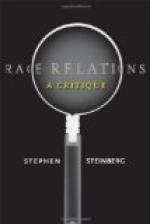|
This section contains 1,777 words (approx. 6 pages at 300 words per page) |

|
Edward Rush
In the following viewpoint, Edward Rush argues that sources of toxic pollution are disproportionately located in minority communities. Blacks, Latinos, and Native Americans are therefore more likely to live near dumps and waste sites than are whites—and as a result experience higher rates of illnesses and birth defects. This kind of discrimination, termed “environmental racism,” has been challenged by the environmental justice movement. However, Rush points out, several industries are trying to discredit this movement by publishing faulty studies claiming that environmental racism does not exist. Rush is an organizer with the Center for Health, Environment, and Justice in Falls Church, Virginia.
As you read, consider the following questions:
1. According to Rush, how does environmental inequity develop into environmental racism?
2. What are some of the flaws of the University of Chicago study on environmental...
|
This section contains 1,777 words (approx. 6 pages at 300 words per page) |

|




